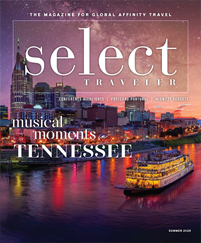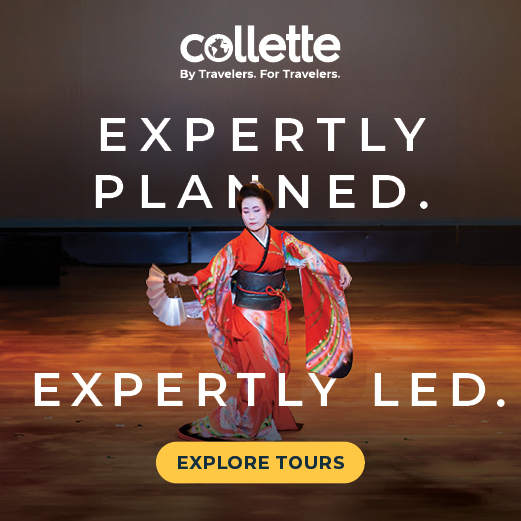To help sell future trips, it’s important to continue to interact with your members year-round.
Even if customers aren’t currently buying travel, e-newsletters can build loyalty to your program. When members are ready to book trips, their interactions with your e-newsletters will make them think of your travel program first.
Our inboxes are inundated with promotional emails of all kinds, so you want to make sure your e-newsletter doesn’t end up in the spam folder. Learning to build compelling, brand-building e-newsletters will establish your travel program as the go-to place for group travel.
Making Time
For some group leaders, it seems impossible to find the time to craft a monthly e-newsletter for travelers. However, when you look at the benefits, you may realize that you can’t afford not to do this.
E-newsletters can outweigh social media because you have more control of the content, how it looks and who receives it. You own your email list, rather than Facebook or another social media site. Plus, you don’t have to rely on algorithms or additional advertising money to deliver your product.
When beginning or rethinking your travel program’s e-newsletters, brainstorm some ideas about how your e-newsletters can reach new customers, retain the ones you already have and build a strong brand identity. According to Experian, $1 spent on email marketing can provide a return of $45, so a thoughtful plan can be worth your while.
To increase your list of member emails, make sure your website has an obvious place to sign up for your e-newsletters. Make note of any deals and quality information they will receive to make the offer tempting. Some group leaders even create contests on social media or online that users automatically enter when they sign up for the program’s e-newsletters.
Design Polish
Realistically, you will only have a few seconds of time to convince someone to read your e-newsletter before they delete it. The quality of the design will often save or doom an e-newsletter.
To create an eye-catching e-newsletter, start by looking online for inspiration. The internet is filled with examples of travel e-newsletters that you can look through to see what strikes you and what seems to fit your company’s brand best. Save the ones you like so you can see what design elements stand out to you most.
Unless you are familiar with InDesign or Dreamweaver, you will want to choose a premade template from your email marketing provider, such as Constant Contact or Mailchimp. You can customize these email templates with a quick tutorial from your provider to make sure you achieve the look you want.
Consider what your email will look like on a mobile device when choosing a template. You want the email to look attractive on all devices by incorporating a responsive design that changes to become easier to read when viewed on a phone.
When incorporating your color scheme, restraint is key. Two or three complementary hues work best. Designers might want to make their newsletters pop with contrasting colors like blue with orange, but subtle color schemes work better, such as multiple shades of the same color.
Use your company’s logo when deciding what colors to choose. For example, alumni travel planners can select colors from their university’s logo to keep a uniform brand look across platforms.
Simple designs with large, high-quality photos and easy-to-read text prove most pleasing to the eye. Customers judge companies on the look of their websites and e-newsletters. Choosing a modern, sleek-looking e-newsletter will subconsciously cause people to associate your organization with superior travel products.
Classy Content
After you captivate your customers with your e-newsletter’s design aesthetic, keep them by incorporating customized content.
Since your customers have limited attention spans, limit the text on your e-newsletters to 200 to 300 words.
Choose topics around themes that might interest your readers. For example, bank members might find interest in financial tips. Or you can personalize your e-newsletter with a post about a recent tour or a funny travel story.
Since your email is travel-themed, make sure at least one of the posts showcases aspirational travel photos or videos. You can post some of your own photos from a recent trip or ask for some from fellow travelers who might be willing to share.
Educational content about travel will help build your reputation as a group travel expert. This builds confidence in your group travel program, which is crucial for members who might feel skittish about traveling after a pandemic.
According to a survey by TripAdvisor, 90% of travelers worldwide report their booking decisions are influenced by online reviews. Bring the reviews to your members by placing testimonials in your e-newsletters. If clients tell you personally how much they enjoyed a tour, ask if you may use their statements in the next e-newsletter.
Don’t make every email promotional — readers will quickly learn to skip every email from you if they feel like they’re always being sold to. But occasional, exclusive discounts will appeal to readers if they know it is a one-time deal.
Experts are divided on how frequently to send e-newsletters. Some maintain that once a month is plenty; others advise weekly emails. Decide what you have time for, and test different days, times and frequencies to see how these factors affect your e-newsletter’s open rates.
Use your email provider’s analytics to determine what type of content receives the most clicks. You don’t want to keep churning out the same types of emails without using this valuable feedback.
These metrics, along with a big-picture plan for your e-newsletter, can help make your next marketing email irresistible for members eager to travel.









